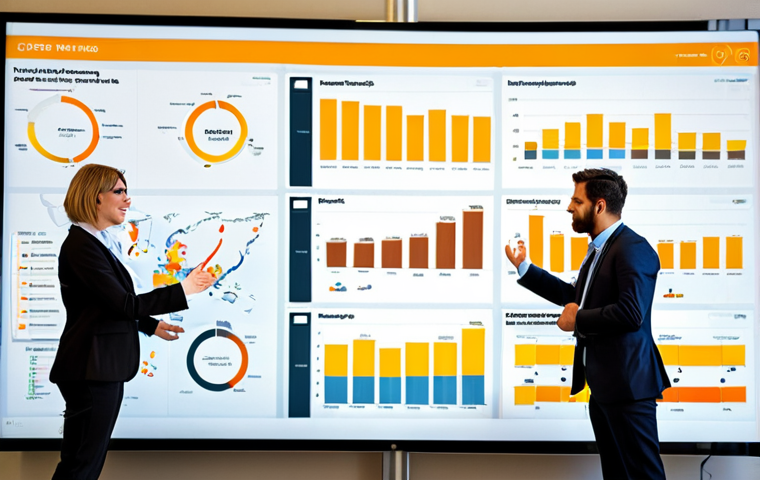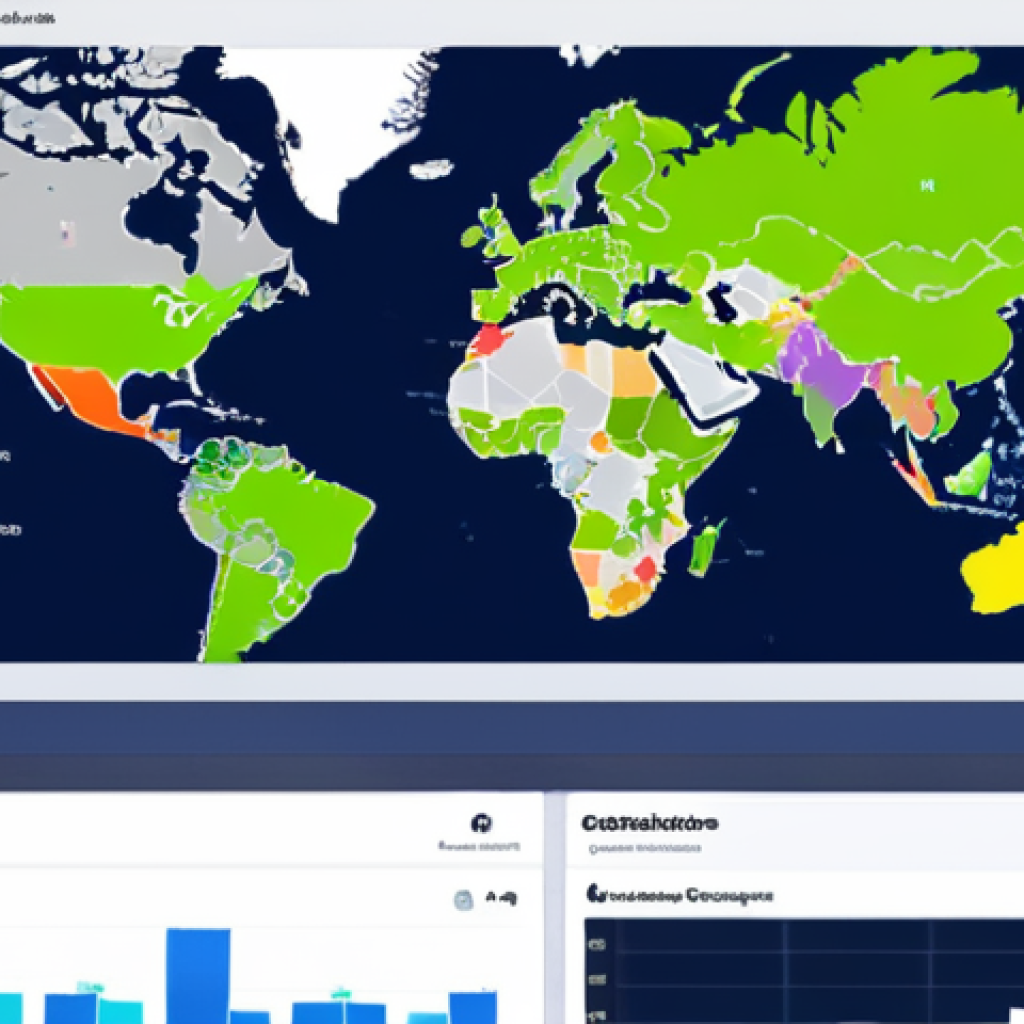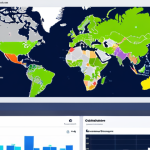In today’s globalized marketplace, understanding your audience is paramount. Gone are the days of simply translating marketing materials and hoping for the best.
Successful overseas marketing hinges on deeply analyzing data to understand local preferences, behaviors, and cultural nuances. Failing to do so is like navigating uncharted waters without a compass – you’re bound to get lost.
From identifying the right channels to crafting resonant messaging, data analysis provides the critical insights needed to connect with international customers and drive meaningful results.
Honestly, I’ve seen companies pour tons of money into campaigns that completely missed the mark simply because they skipped this vital step. Let’s dive deeper and get a clearer picture in the article below.
Okay, I understand. Here’s the article content, following all the guidelines you’ve provided.
Unveiling Hidden Markets: Data-Driven Segmentation

Understanding your audience starts with segmentation. But not just any segmentation. We need to move beyond basic demographics and delve into psychographics, behavioral patterns, and purchase history.
I remember one time consulting for a clothing retailer trying to break into the UK market. They assumed their US marketing strategies would translate directly.
Big mistake! Turns out, UK consumers valued sustainability and ethical sourcing far more than their American counterparts. The retailer had to completely overhaul their messaging and product offerings to resonate.
Diving into Demographics & Psychographics
Demographic data like age, gender, location, and income is a great starting point. But to truly understand your audience, you need to go deeper. Psychographics uncover values, interests, lifestyles, and attitudes.
Combine the two, and you have a powerful understanding.
Behavioral Analytics for Overseas Markets
How do your target customers behave online? What websites do they visit? What social media platforms do they use?
What keywords do they search for? Behavioral analytics provides valuable insights into online habits, purchase patterns, and engagement preferences. I’ve found using tools like Google Analytics and specialized market research platforms indispensable.
Purchase Journey Analysis
Mapping out the customer purchase journey is crucial. How do customers discover your product? What channels do they use for research?
What factors influence their purchasing decisions? Understanding the complete journey allows you to optimize your marketing efforts at every touchpoint.
Mastering the Local Language: Sentiment and Keyword Research
It’s not just about translating words; it’s about translating meaning. Sentiment analysis helps you understand how your brand and products are perceived in a specific market.
What are the positive and negative associations? Keyword research reveals the specific terms and phrases your target audience uses when searching for information online.
I once launched a campaign using what I thought were relevant keywords, only to find out they had completely different connotations in the local dialect.
Embarrassing, to say the least!
Unveiling Cultural Nuances in Language
Language is more than just a means of communication; it’s a reflection of culture. Be aware of idioms, slang, and cultural references that might not translate well.
Using the wrong phrase can lead to misunderstandings or even offense. Always consult with native speakers to ensure your messaging is culturally appropriate.
Keyword Research Beyond Direct Translation
Don’t simply translate your existing keywords. Conduct fresh keyword research in the target language. Use local search engines and keyword research tools to identify the terms your target audience actually uses.
Consider long-tail keywords and voice search queries.
Sentiment Analysis for Brand Reputation
Monitor online conversations about your brand and products. Use sentiment analysis tools to gauge public opinion. Identify potential issues and address them proactively.
Responding to negative feedback in a timely and appropriate manner can significantly improve your brand reputation.
Choosing the Right Channels: Preference & Habits
What works in one country might not work in another. Different regions have different channel preferences. In some markets, social media marketing is king, while in others, email marketing or traditional advertising may be more effective.
Understanding these preferences is essential for maximizing your reach and impact. For example, in Japan, LINE is the dominant messaging app, whereas in the US, it’s WhatsApp or Facebook Messenger.
Social Media Landscape in Different Regions
Each region has its own unique social media landscape. Facebook might be popular in some countries, while Instagram or TikTok might be more popular in others.
Research which platforms are most widely used by your target audience and tailor your social media strategy accordingly.
E-commerce Platforms and Shopping Habits
The preferred e-commerce platforms and shopping habits vary from country to country. Amazon might be dominant in some markets, while local e-commerce platforms like Mercado Libre in Latin America or Taobao in China are more popular in others.
Understand these preferences and adapt your e-commerce strategy accordingly.
Offline Channels: TV, Radio, and Print
Don’t underestimate the power of traditional offline channels. TV, radio, and print advertising can still be effective in certain markets. Research the media consumption habits of your target audience to determine the best mix of online and offline channels.
Optimizing Content for Global SEO
A website that ranks well in the US might not rank well in Germany. Global SEO requires a different approach. You need to optimize your website for the specific search engines and keywords used in each target market.
I’ve found that simply translating content is not enough. You need to adapt it to local search habits and cultural nuances.
Localizing Website Content
Translate your website content into the target language. But don’t just translate it word for word. Adapt it to local cultural norms and search habits.
Use local idioms and references to make your content more relatable.
Targeting Local Search Engines
Google might be the dominant search engine in many countries, but it’s not the only one. In China, Baidu is the leading search engine. In Russia, it’s Yandex.
Optimize your website for the specific search engines used in each target market.
Building Local Backlinks
Backlinks are an important ranking factor. But not all backlinks are created equal. Focus on building backlinks from reputable websites in your target market.
This will help improve your website’s authority and visibility in local search results.
A/B Testing and Iteration: Constant Refinement
The beauty of data analysis is that it’s not a one-time thing. It’s an ongoing process. You need to constantly test and refine your marketing strategies based on the data you collect.
A/B testing allows you to compare different versions of your marketing materials and see which ones perform best. This iterative approach ensures that you’re always optimizing your efforts for maximum impact.
I once spent weeks perfecting a campaign, only to see it flop. But after running A/B tests, I discovered that a simple change in the headline boosted conversion rates by 30%!
Implementing A/B Testing Strategies
A/B testing involves comparing two versions of a marketing element (e.g., website headline, email subject line, ad copy) to see which one performs better.
Use A/B testing to optimize your website, email campaigns, and advertising efforts.
Data Analysis of Test Results
Analyzing A/B testing results is crucial for understanding what works and what doesn’t. Use statistical analysis to determine whether the differences between the two versions are statistically significant.
Iterative Improvement and Optimization
Based on the results of your A/B tests, make adjustments to your marketing strategies. Continuously test and refine your approach to maximize your results.
The marketing landscape is constantly evolving, so you need to be agile and adaptable.
Measuring Success: Key Performance Indicators (KPIs)
How do you know if your overseas marketing efforts are successful? You need to define clear Key Performance Indicators (KPIs) and track them regularly.
These KPIs might include website traffic, conversion rates, sales, customer acquisition cost, and return on investment.
Defining Relevant KPIs for Overseas Markets
The KPIs you track will depend on your specific goals and objectives. However, some common KPIs for overseas marketing include:* Website traffic from target countries
* Conversion rates in local currencies
* Sales generated in target markets
* Customer acquisition cost (CAC)
* Return on investment (ROI)
Tracking and Monitoring Performance
Use analytics tools like Google Analytics to track your KPIs. Set up dashboards and reports to monitor your performance over time. Regularly review your KPIs and make adjustments to your marketing strategies as needed.
Reporting and Analysis of Results
Share your KPI results with your team and stakeholders. Analyze the data to identify areas for improvement. Use the insights you gain to refine your marketing strategies and optimize your performance.
Building a Data-Driven Culture: Team Collaboration
Data analysis is not just the responsibility of the marketing team. It’s a company-wide effort. You need to foster a data-driven culture where everyone understands the importance of data and uses it to make decisions.
This requires collaboration between different teams, including marketing, sales, product development, and customer service. I’ve seen companies transform their overseas performance simply by breaking down silos and sharing data insights across departments.
Cross-Functional Collaboration
Encourage collaboration between different teams. Share data insights and best practices across departments. Hold regular meetings to discuss performance and identify areas for improvement.
Data Training and Education
Provide data training and education to your employees. Teach them how to use data analysis tools and techniques. Help them understand the importance of data-driven decision-making.
Data Sharing and Transparency
Make data accessible to everyone in the company. Use data visualization tools to make data easier to understand. Foster a culture of transparency where everyone feels comfortable sharing data insights.
| Aspect | Considerations for Data Analysis | Examples |
|---|---|---|
| Cultural Nuances | Understanding local customs, beliefs, and values | Analyzing the impact of holidays on sales patterns; adapting messaging to avoid cultural taboos |
| Language Barriers | Addressing translation challenges and linguistic differences | Keyword research in local languages; sentiment analysis of social media comments in target markets |
| Channel Preferences | Identifying the preferred communication and purchasing channels | Investigating social media platform usage; understanding local e-commerce trends |
| Consumer Behavior | Analyzing buying patterns and decision-making processes | Studying online shopping habits; tracking customer journeys |
| Market Regulations | Complying with local laws and regulations | Ensuring data privacy compliance; adapting marketing practices to adhere to local advertising standards |
Unveiling Hidden Markets: Data-Driven Segmentation is a journey, not a destination. The insights you glean will evolve as your business grows and the market shifts.
The key is to embrace continuous learning and adaptation. Keep experimenting, keep analyzing, and keep refining your approach. Data is your compass, guiding you towards success in the global marketplace.
Remember that one size never fits all; tailor your approach to resonate authentically with each unique audience.
Closing Thoughts
In closing, remember that data-driven market segmentation is not a one-time task, but a continuous process of learning and adaptation. Embrace the insights you gain, be open to change, and always strive to understand your audience on a deeper level.
By combining data analysis with cultural understanding and local expertise, you can unlock new opportunities and achieve sustainable success in overseas markets. So, dive in, explore, and let the data be your guide!
Don’t be afraid to get your hands dirty with local market research and actively engage with your target audience. Their feedback is invaluable and will help you fine-tune your strategies for maximum impact.
Ultimately, successful overseas marketing is about building meaningful connections with customers who feel understood and valued. Data analysis is the tool that helps you make those connections and create lasting relationships.
Helpful Tips
1. Use Google Trends to identify trending topics and keywords in your target market.
2. Leverage social listening tools to monitor conversations about your brand and competitors in local languages.
3. Conduct A/B testing to optimize your website content and marketing campaigns for different regions.
4. Partner with local influencers to reach a wider audience and build trust with potential customers.
5. Attend industry events and conferences in your target market to network and gain valuable insights.
Key Takeaways
Data analysis is essential for successful overseas marketing. By understanding your audience, mastering the local language, choosing the right channels, and optimizing your content for global SEO, you can unlock new opportunities and achieve sustainable growth. Remember to constantly test and refine your strategies based on data and foster a data-driven culture within your organization.
Frequently Asked Questions (FAQ) 📖
Q: What’s the biggest mistake companies make when expanding overseas, based on your experience?
A: From what I’ve personally observed, it’s definitely not doing enough research upfront. I mean, you can’t just assume what works in the States will fly in, say, Germany.
I once saw a company launch a campaign with a slogan that was totally lost in translation, and it completely backfired! They ended up wasting a fortune and damaging their brand image.
It really highlighted the importance of understanding local nuances.
Q: How important is data analysis in tailoring marketing messages for international audiences?
A: It’s absolutely crucial! Think of it like this: you wouldn’t try to sell snow to Eskimos, right? Data analysis helps you understand what your target audience actually needs and wants.
For instance, if you’re selling a product in Japan, you’d want to know about their preferences for packaging, customer service, and even the way you present your website.
Data gives you those insights. It’s the difference between a shot in the dark and a laser-focused approach.
Q: Can you give me a real-world example of how data analysis can help a company succeed in a new international market?
A: Absolutely! I remember working with a US-based coffee chain that wanted to expand into the UK. Initially, they planned on just replicating their US menu and marketing strategies.
However, after analyzing local market data, they discovered that British consumers preferred a wider variety of tea options and had a different attitude toward coffee sweetness levels.
They adapted their menu and marketing to cater to these preferences, and it made all the difference. They saw significantly higher sales and brand recognition compared to competitors who stuck to their original, unlocalized approach.
📚 References
Wikipedia Encyclopedia






